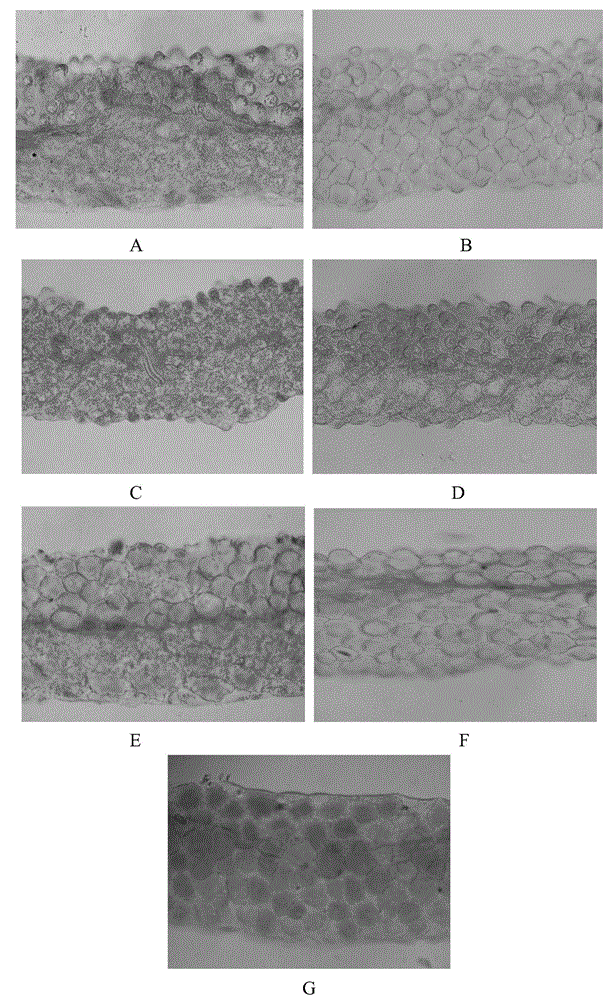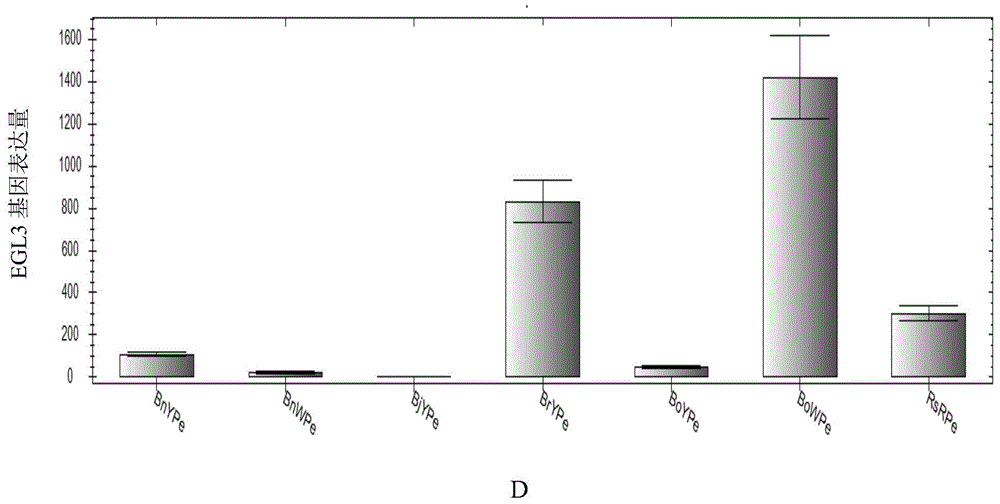Application of gene for interfering expression of LCYB and LCYE and simultaneously ectopically expressing TT8 in preparation of brassica plant having red petals
A technology of brassica, flower petals, applied in the field of biology
- Summary
- Abstract
- Description
- Claims
- Application Information
AI Technical Summary
Problems solved by technology
Method used
Image
Examples
Embodiment 1
[0041] Example 1. Microscopic observation of the chromogenic subcellular organelles of Brassica and radish petals
[0042] Take fresh cabbage-type rape yellow petals (BnY); cabbage-type rape milk petals (BnW); mustard-type rape yellow petals (BjY); Chinese cabbage-type rape yellow petals (BrY); kale yellow petals (BoY); kale White petals (BoW); radish red petals (RsR), stored on ice and shipped back to the laboratory, then sliced by hand, observed with low magnification for rapid screening, and selected qualified slices for careful observation and photography. The results are as follows figure 1 shown. The results showed that the yellow substances in the yellow petals of several species of Brassica appeared as many small particles in a cell, distributed unevenly in the cell, and were squeezed by the vacuoles to the adherent position, indicating that the yellow petals were in the form of many small particles. Chromogenic organelles are chromosomes whose pigments are yellow c...
Embodiment 2
[0043] Embodiment 2, detect Brassica and radish petal pigment
[0044] In the morning of full bloom, take the yellow petals of Brassica napus (BnY); Brassica napus milk petals (BnW); Brassica napus yellow petals (BjY); Brassica napus yellow petals (BrY); Brassica napus yellow petals (BrY). BoY); kale white petals (BoW); radish red petals (RsR), immediately cool and fresh, transported back to the laboratory, dried at 50-60 °C, ground into powder, passed through a 60-mesh sieve, and dried in the dark for storage.
[0045] 1. Test results of petroleum ether, hydrochloric acid and ammonia water
[0046] Weigh 0.100g of the preserved petal powder, put them into numbered test tubes with stoppers, add about 10mL each of petroleum ether, 10% hydrochloric acid, and 30% ammonia water, mix gently, filter, and observe the color change, the results are as follows :
[0047] (1) Petroleum ether reaction: Brassica napus, cabbage-type rape, and mustard-type rape all show bright yellow, indi...
Embodiment 3
[0067] Example 3. Molecular identification of Brassica and radish petal pigment biosynthetic pathways
[0068] (1) Expression characteristics of flavonoid pathway genes in Brassica and radish petals
[0069] In order to study the molecular mechanism of the difference between Brassica and radish petal pigments, RT-PCR detection primers for Brassica and radish flavonoid pathway genes were designed, and 5S rRNA was used as an internal reference, as shown in Table 1:
[0070] Table 1. Flavonoid pathway RT-PCR detection primers
[0071]
[0072]
[0073]In the morning of full bloom, take the yellow petals of Brassica napus (BnY); Brassica napus milk petals (BnW); Brassica napus yellow petals (BjY); Brassica napus yellow petals (BrY); Brassica napus yellow petals (BrY). BoY); kale white petals (BoW); radish red petals (RsR), frozen in liquid nitrogen for transportation, and stored in a -80°C refrigerator for later use. Then use RNAprep Pure plant total RNA extraction kit to ...
PUM
 Login to View More
Login to View More Abstract
Description
Claims
Application Information
 Login to View More
Login to View More - R&D
- Intellectual Property
- Life Sciences
- Materials
- Tech Scout
- Unparalleled Data Quality
- Higher Quality Content
- 60% Fewer Hallucinations
Browse by: Latest US Patents, China's latest patents, Technical Efficacy Thesaurus, Application Domain, Technology Topic, Popular Technical Reports.
© 2025 PatSnap. All rights reserved.Legal|Privacy policy|Modern Slavery Act Transparency Statement|Sitemap|About US| Contact US: help@patsnap.com



